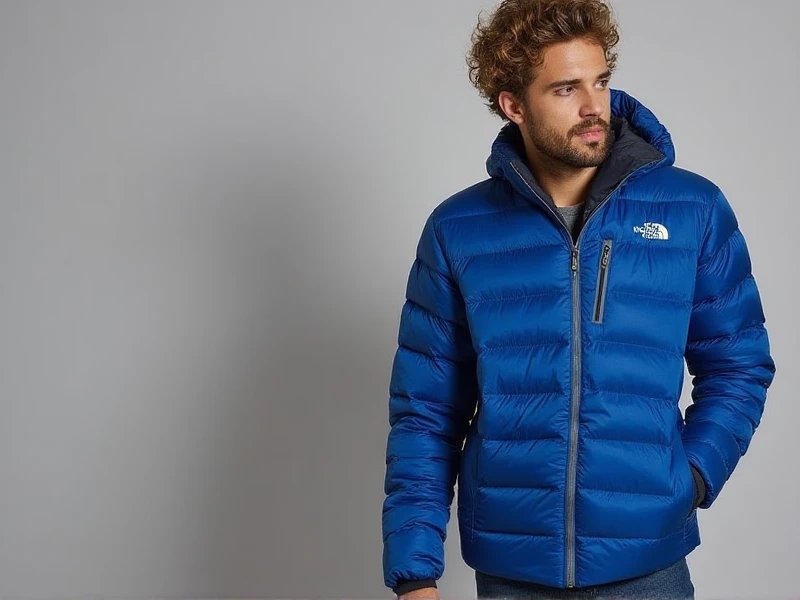The Ultimate Guide to Choosing the Perfect Men's Outdoor Coat
2025-06-08

Stepping into the great outdoors demands reliable gear, and for countless men, a top-performing men's outdoor coat is the cornerstone of any adventure. Finding the right one isn't just about looking good; it's about staying protected, comfortable, and ready for whatever nature throws your way. This guide dives into the essential factors to consider when selecting your ideal men's outdoor coat.
Understanding Your Outdoor Scenarios
The most critical question isn't "which coat is best?" but "best for what?". A men's outdoor coat designed for strenuous hikes differs vastly from one meant for winter camping or casual dog walks. Ask yourself:
1. Activity Level: Will you be highly active (trail running, climbing, intense hiking) or relatively stationary (fishing, campfires)? Active pursuits demand breathability above all else to manage sweat; lower-intensity activities prioritize warmth retention.
2. Environment & Weather: Bitter cold mountain tops? Drizzly forests? Windy ridgelines? Expect heavy downpours or dry cold? The specific challenges dictate needed features like insulation, waterproofing, and wind resistance.
3. Duration: A quick one-hour walk requires less warmth and bulk than an all-day expedition where conditions might shift dramatically.
Key Features of a High-Performing Men's Outdoor Coat
1. Weather Protection: This is non-negotiable for a true men's outdoor coat.
Waterproofness: Look for reliable waterproof ratings (e.g., 10,000mm or higher). Membranes like Gore-Tex, eVent, and proprietary brand technologies offer excellent protection. Taped seams are essential.
Wind Resistance: A good outer fabric blocks wind chill significantly. Look for tightly woven synthetics or membranes designed specifically for wind resistance.
Weather Resistance: Many jackets offer good protection against light rain and wind without the full waterproof membrane, often more breathable – ideal for variable conditions or light activities.
2. Insulation (or Lack Thereof):
Insulated: Ideal for cold climates. Options include synthetic fill (quicker drying, retains warmth wet) and down (lighter, warmer when dry, packs smaller). Fill power (for down) and weight (grams per sq meter for synthetics) indicate warmth level.
Shell (Waterproof/Windproof Layer): Provides core weather protection but minimal inherent warmth. This is perfect for layering underneath with insulating mid-layers suited to the activity and temperature. Offers maximum flexibility.
Softshell: Stretchier, highly breathable, and weather-resistant (not fully waterproof). Excellent for high-output activities in cool to cold, drier conditions or as a mid-layer under a hardshell in severe weather.
3. Breathability: Crucial to prevent overheating and sweat buildup during exertion. High-performance waterproof membranes also prioritize breathability, allowing water vapor (sweat) to escape. Vents (like pit zips) add significant airflow.
4. Durability and Construction:
Materials: Robust polyester or nylon ripstop fabrics resist tears and abrasions encountered on trails or rocky terrain.
Reinforcements: Look for tougher fabric on shoulders, elbows, and cuffs.
Quality Zippers: YKK zippers are a hallmark of durability. Water-resistant zipper garages protect the main closure.
5. Fit and Comfort: A men's outdoor coat must allow unrestricted movement. Consider:
Articulated Sleeves/Patterns: Enhance mobility for hiking poles, climbing, etc.
Length: Longer coats cover more but might hinder leg movement. Waist-length offers agility.
Helmet Compatibility: Important if climbing or skiing – look for ample hood volume. Adjustable hoods are vital regardless.
Cuff Adjustments: Prevent cold air and moisture entry.
Hem Cinches: Lock out drafts at the waist.
Layering Room: Ensure space for mid-layers underneath without feeling constricting.
6. Practical Features:
Ample Pockets: Secure zippered pockets for essentials. Napoleon chest pockets are great for keeping valuables handy and drier. Interior mesh pockets add options.
Adjustable Hood: Tight, weather-sealed fit is essential. Should allow turning the head easily. Stowable hoods are useful.
Essential Extras: Drawcord hem, durable cuff closures, and potentially a stash pocket or two-way zippers for ventilation.
Choosing the Right Insulation Level
Winter & Severe Cold: Prioritize high-fill down or heavy synthetic in a waterproof shell or an integrated "puffy" designed for outerwear.
Active Winter/Fall/Spring (Cold): A versatile shell with excellent layering capability is often best. Pair with synthetic/down layers as needed.
Cool/Cold & Dry High-Output: A highly breathable, wind-resistant softshell is the go-to choice.
Rainy/Breezy Conditions: A high-breathability waterproof shell (hardshell) protects you from the elements while minimizing sweat buildup. Pair with mid-layers based on temperature.
Brands Trusted for Men's Outdoor Coats (Examples):
Brands like Patagonia, The North Face, Arc'teryx, Mammut, Marmot, Mountain Hardwear, and Fjällräven consistently produce high-quality, innovative men's outdoor coats tailored to specific activities and conditions. While brand heritage matters, prioritize the features matching your needs.
Investing in Adventure
Choosing the right men's outdoor coat is an investment in comfort, safety, and enjoyment in the wild. By carefully evaluating your activities, environment, and the features offered, you can find the technical outerwear that becomes your essential companion. A coat that masters weather protection, breathability, and comfort ensures you focus on the wonder of the wilderness, not discomfort. Explore confidently, stay dry, and revel in every outdoor pursuit with the perfect shield at your back.
Category: